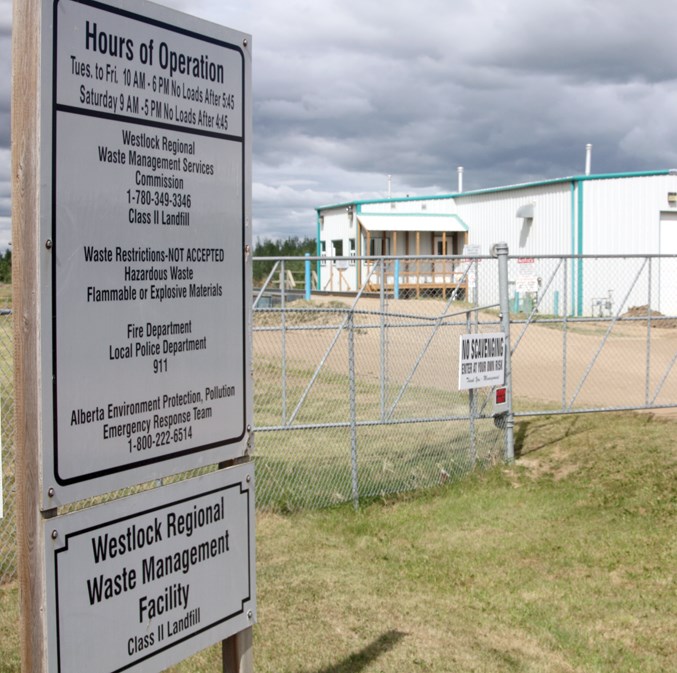The Westlock Regional Waste Management Commission (WRWMC) isn’t setting aside nearly enough to cover closure and post-closure costs.
Commission manager Tom Moore had some good news and some bad news for the three partner municipalities when he presented his annual report at Westlock town council’s and Village of Clyde council’s June 11 meetings.
Moore made the same presentation to Westlock County council June 26.
Moore pointed out to the member municipalities of the WRWMC that it was proving difficult to set aside the required amount of post-closure savings needed to maintain testing and monitoring as revenues are just not currently meeting the required costs, he said.
“I have to put aside so much each year so when we close that landfill, even if we closed it today, there’s costs that we have to pay out for the next 25-30 years minimum,” he said.
Moore said he was currently setting aside $18 a tonne for reserves, which does not include day-to-day operations
“We need to be closer to $85 a tonne clear across the board. We should also be putting aside $3 per tonne for closure and post-closure. Currently we’re only at a dollar a tonne.
“This is one cost that we can’t get away from. No matter when that facility is closed these costs have to be paid for one way or another. If, for example, we decide to close the facility tomorrow we need to have at least $300,000 in the bank minimum to cover the next 25-30 years. That’s just the way it is. We have to pay for the wells to be tested for at least 25-30 years,” said Moore.
Another of the most costly aspects of operating the landfill, said Moore, is the disposal of leachate, which is essentially garbage juice that collects in the bottom of the cell. It is considered toxic and must be disposed of appropriately. In 2017, leachate management cost $11,500.
Moore said he recently had to change the destination of the leachate as he used to be able to dispose of the liquid at the Pibroch sewage lagoon but now the chemistry has changed and he has to ship it to deep well injection sites in Edmonton.
“My cost has gone for about $12.50 per cubic metre, to over $40 per cubic metre to get rid of this leachate,” Moore said, adding recent rains probably cost him about $10,000.
“This is a costly venture, it’s not inexpensive. The chemistry in these can be two or three pages long ... I have to meet certain regulatory guidelines as to how that’s disposed of.”
There are also test wells drilled around the landfill that must be monitored for gases and surface water contamination, which costs another $15,000 per year.
Moore provided a detailed accounting of the activities at the landfill in the last year, noting the addition of new machinery and expanded areas that have made the landfill more efficient.
“I’m starting to get proud of the facility now, it has taken a while to get it cleaned up, but we’re getting there,” said Moore, adding that since he has arrived he’s been recording the true tonnage of the waste disposed of there to get a better handle on what is being dropped off.
In 2017, 4,084 tonnes of residential waste and 3,500 tonnes of commercial and industrial waste were added to the landfill. There was also 1,500 tonnes of other waste like tires and electronics.
The installation of a recycle baler last fall has also now made it possible to bale cardboard, paper, plastic and tin.
“We also handle electronics, tires, metal, concrete, batteries, clean pesticide containers, paint, used oil, used oil filters and used oil containers,” said Moore.
The recent addition of a transfer station, where people can drop off small amounts of waste, has reduced the volume going into the landfill, as it diverts traffic away from the actual landfill, where more accidents are prone to happen, he said.
Safety is always a top priority, he added.
The transfer station has also increased the amount of recycling as it’s right beside the recycling facility.
“People are getting to be more receptive to recycling their cardboard, paper, tin and plastic,” said Moore.



